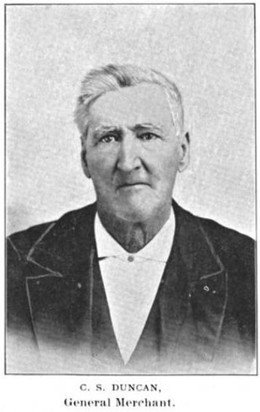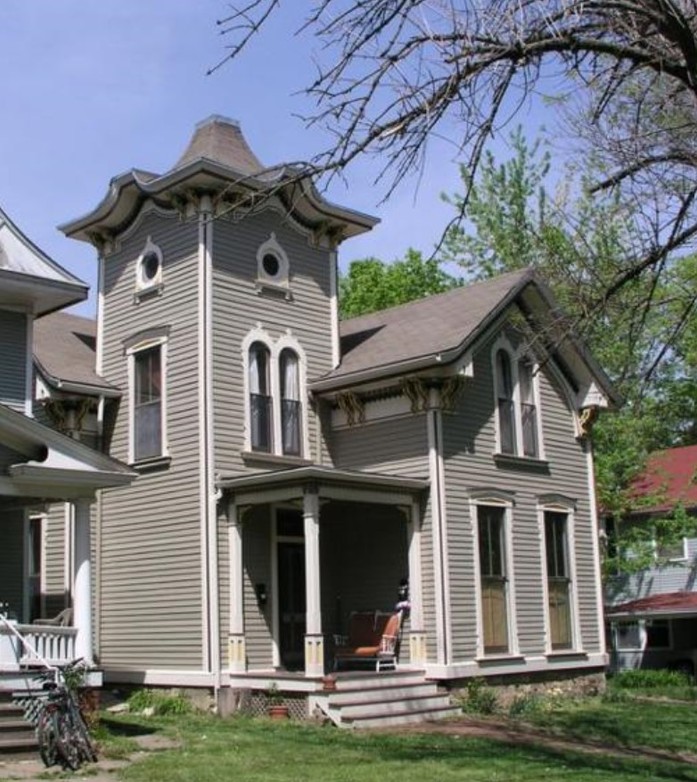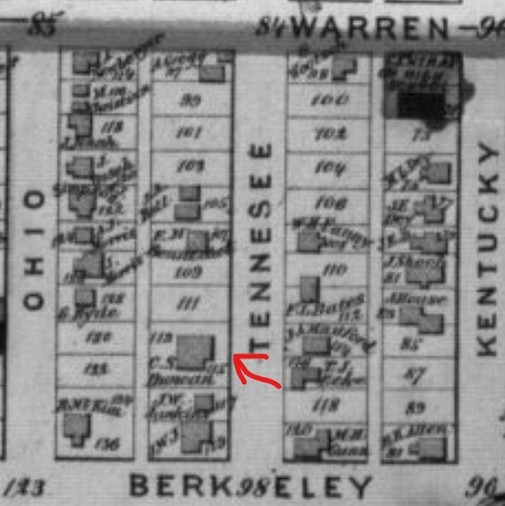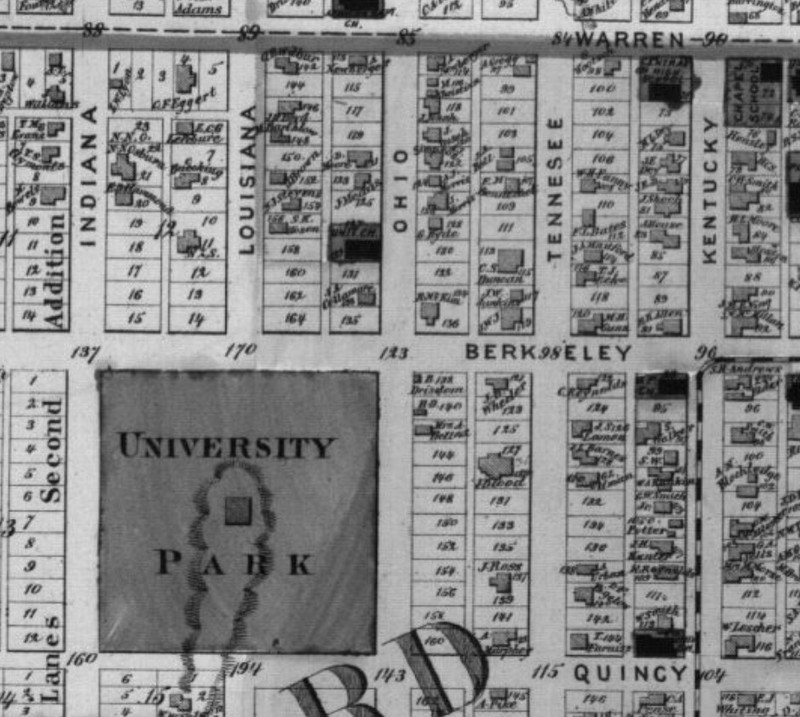Charles Duncan House
Introduction
Text-to-speech Audio
Images
Photograph of Charles S. Duncan, merchant, early Kansas settler, from 1895 book (Cordley 1895:240)

2007 photograph of front and side of Charles Duncan House (KHRI online documentation)

C.S. Duncan House (red arrow) on 1873 Beers Atlas map of Douglas County, p. 33

Duncan house neighborhood on 1873 Beers Atlas map of Douglas County, p. 33

Backstory and Context
Text-to-speech Audio
The Charles Duncan House rests on a stone foundation; the builder of the cross-gabled structure with its tall tower containing the front door is unknown. The house formerly had at least two rear porches, one of which was removed around 1908 and another during 1986 renovations.
The Charles Duncan House was listed in the Kansas and National Registers in 1986 and is a contributing element to the Oread Historic District, listed on the National register in 2007. The house is significant for its well-preserved architecture; most other surviving Italianate villas in Lawrence are either brick or stone, making the wood frame Duncan house unique. The house also is significant for its association with the development of Lawrence, from the town's second building boom after the destruction of Quantrill's raid in 1863.
Charles S. Duncan was born in Virginia in 1822 and migrated from Missouri to Kansas in 1855. Duncan was a prosperous merchant and purchased the lots for this house in 1869. The home cost over $5,000 to build, suggesting a skilled architect and builder using quality materials; a comparable two-story stone house of the era was built for only about $2,000. The house is just blocks from the University of Kansas, established in 1866. Duncan and his brother-in-law and cousin, Wesley H. Duncan, were in business together in the dry goods store known as "W. H. and C. Duncan" in the 1850s; the partnership was dissolved in 1860. The cousins again were in business in the 1870s with G.W.E. Griffith as "Griffith, Duncan & Co.", sellers of hardware and agricultural implements. The cousins helped in the establishment of the first Methodist Episcopal Church in Lawrence.
A lumber dealer named Luther N. Lewis purchased the Duncan House in 1904. Lewis had graduated from Kansas University in 1891 and remained active in the local chapter of his fraternity, Phi Gamma Delta. Lewis was on the Board of Directors of the Peoples State Bank of Lawrence, chartered in 1905. Lewis subdivided the lot and sold the house to Charles Hicks Tucker in the 1920s. Tucker became president of Watkins National Bank in Lawrence in 1923; in the same year, he was head of the state's historical society. The house was sold several times until the owners in the 1980s undertook the renovation project which turned the house into apartment units, using preservation tax incentives.
Sources
Cordley, Richard. A History of Lawrence, Kansas, from the First Settlement to the Close of the Rebellion. Lawrence, KS. E.F. Caldwell, 1895.
Hagedorn, Martha. NRHP Nomination Form for Charles Duncan House. National Register. Washington, DC. National Park Service, 1986.
Loughlin, Amanda. 045-3010-00399 Duncan, Charles, House, 933 Tennessee St Lawrence, Kansas Historic Resources Inventory, Kansas State Hist Soc. Accessed June 5th 2020. https://khri.kansasgis.org/index.cfm?in=045-3010-00399.
S. Lewis and Company. The United States Biographical Dictionary, Kansas Volume. Kansas City, MO. S. Lewis and Company, 1879.
Wheeler, H. C.. Pi Deuteron, Kansas. The Phi Gamma Delta. October 1st 1920. 622 - 623.
Cordey 1895 on Google Books
https://khri.kansasgis.org/index.cfm?in=045-3010-00399
Beers 1873, Kansas State Historical Society website: https://www.kshs.org/km/items/view/208302
Beers 1873, Kansas State Historical Society website
